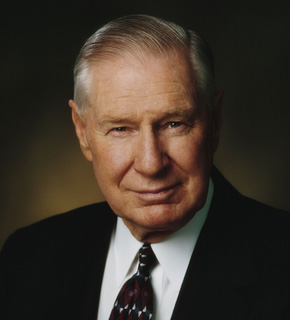[UPDATED 03/03/07 – 1625 MDT]
I was wrong on one prediction below — “September Dawn” managed to break the $1 million mark for total gross to date (vs. a production budget of $11 million). However, it did nosedive in number of theaters (415, down from 872 last weekend), total gross for the 3-day weekend ($129,000 vs. $608,157, nearly an 80% drop — horrific for a movie in its 2nd weekend of release), and per theater gross for the 3-day weekend ($310/theater vs. $702/theater last weekend). Clearly, there’s no groundswell for this film. Maybe the distributors will have better luck selling the DVD.
[ORIGINAL POST]
OK, people are welcome to have their various opinions about “September Dawn” even though most critics think it’s wretched and there appear to be some real historical howlers in it. For example, from what I’ve read, there’s a sequence in which one of the characters is forced(!) to go through the temple endowment ceremony down in southern Utah, even though there were no temples down there until 20 years after the Mountain Meadows attack, and the only ‘endowment house’ in operation was hundreds of miles north, in Salt Lake City. Also, at that point, in order to attend the temple, you had to have the explicit approval of the LDS Church President (this continued until the early 20th century).
But I’ve run across this article in which the author suggests that the flood of poor reviews for “September Dawn” is due to — wait for it — quiet sabotage on the part of the LDS Church:
While the Mormon hierarchy denies any effort to directly or indirectly sabotage the film, it seems possible much of the criticism dealing with the film is derived from some common blueprint. Perhaps the suggestion is wrong — indeed, I sincerely hope that it is — but, while not being prone to embrace conspiratorial theories, I can understand those who question coincidence in matters of this nature. However, any effort to suppress speech in such a manner would not be in keeping with the thinking of friends of mine in the Mormon community. No matter how upset they might be with what they considered to be an unfair criticism of their religion, they are Americans first and Mormons second. As a consequence, they respect our freedoms, particularly freedom of expression. They would grit their teeth and let the film rise or fall on its artistic merits, secure in the knowledge that it is merely a film and their religion is more than strong enough to withstand any criticism — accurate and profound or unfair and derivative. And, again, no such criticism of the present day LDS Church was ever intended. Moreover, it concerns me that members of a great religion, such as Mormonism, may feel the need to sabotage a film in order to preserve their version of history.
The author, Ken Eliasberg, seems to seriously think that the LDS Church has somehow managed to convince critics as diverse, well-known and/or visible as Michael Medved (USA Today), Roger Ebert (Chicago Sun-Times), Dessen Thompson (Washington Post), Steve Heyden (Onion AV Club), Matt Zoeler Seitz (New York Times), Owen Gleiberman (Entertainment Weekly) and J. Hoberman (Village Voice) to give “September Dawn” the rather poor reviews it has received. Once again, I simply point people to the list at Rotten Tomatoes (which is back down to 15% “fresh” — which means 85% “rotten”).
Eliasberg’s key evidence, apparently, is his claim that several reviewers have used the term “ham-fisted”, suggesting (as per the quote above) “some common blueprint”. Eliasberg does not apparently realize that “ham-fisted” is not that uncommon a term for, well, reviews of ham-fisted movies. A Google search for [movie “ham-fisted” review] yields nearly over 100,000 hits. And they’re not all “September Dawn”.
Meanwhile, the movie itself is nose-diving at the box office, will likely be out of theaters altogether within another week or two, and may not even break the $1 million box office mark (it’s currently grossed $836,000 through Thursday). Based on the reviews I’ve read, I would say that Mr. Eliasberg got his wish that the movie “rise or fall on its artistic merits.”
I don’t mean to sound snippy, but this is, in a word, asinine. And, just possibly, ham-fisted. ..bruce..
P.S. Having written this, I’ve discovered that Carol Schutter, the co-author of the screenplay for “September Dawn”, appears to be the one making the claims of LDS Church conspiracy behind the film’s bad reviews, going so far as to issue a press release.
